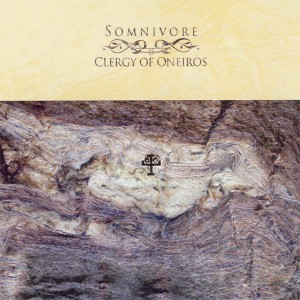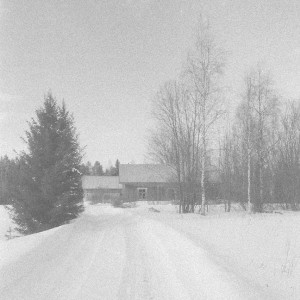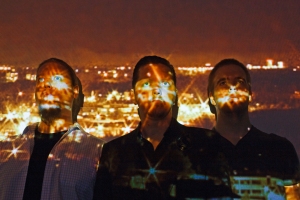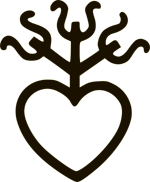Tervahäät interview in Kaleidoscope magazine #9:
So, this issue of Kaleidoscope is concentrating on cultural awareness and national pride, so I guess it’s suitable to talk about Finland and about being Finnish with you guys. So let’s start with a difficult one: what is “Finnish” for Tervahäät – is it the environment, the culture, the state of mind – or maybe all of these combined? And connected to this, what Finnish and which sides of the Finnish culture does your music contain in your own opinion?
Maybe it’s easiest to turn this question around a bit… observing our surroundings gives us thoughts about what is not Finnish and ignoring that irrelevant stuff gets us on the right tracks. This is indeed a difficult question to answer, and I think we are actually trying to find an answer for this too with our art.
Your debut album deals with Finland but it makes it quite unconsciously – there aren’t these typical kanteles or things like that but more mental levels, which come from your heart, not from the outside. How deep did you have to dive to get the core of the music visible/hearable? What kind of preparations did you have before you started writing/recording your music
All started as a vague idea and visions that lead to the first improvised sessions that we had. From that session we found the core sound and the right atmosphere. The first improvised session led to a strong vision about the name that was actually directly connected to quite normal wedding-tradition... When we look at those times – a bit over two years ago that is – we feel like the right mind-set helped us to find the sound, and the sound and the atmosphere it evoked resonated in some parts on our spirits, and thus gave birth to name and complete sound of Tervahäät and opened some more doors to the worlds where all this pours from. The name just struck one day loud and clear; the tar-wedding is the first wedding-day that you spend alone after your significant others death. This vision felt like channeling some forgotten tradition or a holy day that had in some level existed since the dawn of time, and despite it has really specific meaning it can also be looked in more symbolical perspective.
The second pillar of the basis of this whole thing – the percussive element - was found when we took the name and instruments with us to the place where we nowadays go to record and write. That old cabin and its surroundings, everything there from old photographs and newspapers, desolate old roads, snowy forests and active spiritual life seemed to open new doors. There we understood the importance of those percussions you can hear at “Otava” and “Menneet”. We also realised how that place had already affected to the birth Tervahäät, for it has been an influential in many ways and filled with strong spiritual experiences every time we had visited there before actually beginning with Tervahäät, before the clear idea of the first session was even there. When we entered that place the first time with the name and those sounds with us, it was a bit like returning back home. The element of improvisation is strongly still present when creating text and sound, but now it is accompanied by some bits of careful planning. Those percussions are a big part of the whole Tervahäät sound on the first album (and will be on the second one too), still we chose not to use percussions at all when we play live.
And connected to this, what Finnish and which sides of the Finnish culture does your music contain in your own opinion?
This music and art is only atavism and visions channeled by by two Finnish men. Some people see different parts of Finnish culture connected to Tervahäät, we see only this purest possible form of art we are capable of.
Another interesting thing is the “faceless” nature of your music – it’s hard to say, which instruments are used, whether the soundscape organic or electric or not etc. The sound is somehow timeless, like the songs were as natural and pure as leaves in a tree. Did you have these kinds of thoughts in your mind while making this album?
Those who resonate with our ideas and have longing to these different worlds like we do, maybe sense the results of our reaching towards these planes as some kind of timelessness. Being succesful in making something that feels timeless and ageless is always closely connected to reaching towards the divine and unseen – the formless, the timeless. The archtypical ideas have been born from somewhere, so that means the they are affected by time too and surely face some kind of death sooner or later - they are not timeless... But there are countless different kinds of worlds between this roughest one that we operate at the moment– me typing these words, you reading this paper - and the ultimate formless one, in those worlds time itself has different kind of meanings. Maybe we have managed to capture some essence or reflections from these worlds to our art.
But nothing comes from nowhere, so there must be some musical influences which have affected the music of Tervahäät… So, where did you suck the most precious blood from in order to create this album – something Finnish was maybe on the list?
We always notice the same selected works of groups of magnificent artists led by Albin Julius, Timothy Renner, Gylve Nagell and David Eugene Edwards to find their place on the player when we are travelling together.
And let’s continue with the influences. Of course the whole environment and the society around us are fuel for creation, but maybe some particular things – literature, old stories, own thoughts and ponderings – were the brightest sparks to guide you to your destination?
Of literacy influences we have to mention the classical works about Finnish traditions and magick collected by Krohn and Lönnrot, and massive source of information about Savonian people, “Savo ja sen kansa”. Of course Kalevala is one of the most important sources of inspiration. We have also found some interesting old newspapers and writings from inside and from the surroundings of the cabin where we write and record, they also add something to the end result.
Your lyrics use basic methods of Finnish poetry: alliterations, short verses and variations of Kalevala meter. This style reminds me of Eino Leino’s classic Helkavirsiä collection (which seems to be a favourite of IC Rex and many other black metallers too), so I have to ask about the influence of this book on your work.
It would be harsh overstatement to call this book influential to Tervahäät. We think it’s a nice piece of art, but to us it is not of significant importance.
Still, you aren’t afraid to use gloomier and harsher language like a word ‘vittunaamat’ in Lumi – a perfect example that Finnish culture isn’t just a polished utopia in J.L. Runeberg’s national romantic poems but also snot and lots of perkele! Any thoughts about this?
These words are part of Finnish language and they are used if necessity dictates. This word “vittunaamat” (in the track “Menneet”) came out naturally when we were improvising the words. We have absolutely no need to avoid any part of the Finnish language. In this land of Kyrpäjärvi’s and Paskakräähi’s it hypocritical to assume that these words are not part of our true culture. That is where the collector of Kalevala poems made his worst mistake, he left all the sex, cursing and probably lots of magick and rituals out of the book. Maybe this was because of some relatively new integrated values that didn’t fit the original and true Finnish culture..? Anyway, this is a serious stain - forgery of the history of Finland.
A listener can’t bypass the melancholic nature of your music either. I guess there are no countries more melancholic than Finland, but how would you describe this relationship between melancholy and the Finnish state of mind? Do you see it as a depressive and paralyzing power or more as an inspiring one? What kind of a role does melancholy have in Tervahäät
We don’t see our music melancholic, and we know for a fact that excess and overtly romantic melancholy is indeed paralysing instead of energising. We consciously try our best to avoid melancholic states of mind. Maybe melancholy is one of those mantels of martyrdom that Finnish people like to carry with some twisted pride.
Many bands – black metal or neofolk or something else – are usually longing for the old ages, where people were honest and more close to their roots, and this seems to be the deal with Tervahäät as well. But is there any dialogue going on between the modern world and Tervahäät, or are you more like a ghost from the past, knocking on the listener’s door telling old, forgotten stories, blessings and curses?
Maybe that timelessness that we discussed earlier brings that feeling of old ages? Dialogue between the modern world and Tervahäät is that we live in the year 2010 and this is when these efforts of reaching towards the transcendent take place, no more, no less. No matter how old and archaic feeling the visions of the name “Tervahäät” and its purpose we had, it still happened in year 2008. We are speaking again about this bridge from this day to those places unlike the world we are used to, how does one open it, and how does one record the experiences to text and sound.
Nowadays the general assumption is that a modern man has lost his connection with his past, culture and soil, and it seems that we Finns are no exception. How do you see this situation: have Finnish people been alienated from their roots, or maybe the knowledge has been passed to a certain limited group who still wants to carry the torch, so to speak?
One can live a entire lifetime without caring about these roots that you are talking about, but ignoring them doesn’t make them disappear or make them entirely powerless. They affect many parts of your life no matter did you like it or not. So… somebody wants to ignore these roots for some reason. Somebody wants to dig as much as he can to find out how deep they are, and what do they look like… and somebody just wants to stay behind the back of the latter case and make notes that might help in his life somehow. Hopefully people are able to find suitable methods in solving this important question. Our choice is clear.
And if we look at how foreign people see us Finns – maybe our biggest selling points are Moomin trolls, Kaurismäki movies and a stubborn, withdrawn mentality, but is this also an image we want ourselves to be seen through? Or should we even give a fuck?
Maybe Kaurismäki brothers and Tove Jansson just create, the selling points come later. It is hard to imagine those kind of artists who would be fuelled by money only. Even the silliest Moomin-troll product has to have something of that jewel what is the original works of Tove Jansson. These products wouldn’t sell at all if they wouldn’t point to this marvellous original idea. We certainly have no agenda to generate any kind image of Finland. We are just Finnish artists, and it depends on a person whether he wants us to be the part of his vision of Finland or not.
Well, another impression is that an outsider can’t even understand us Finns. Do you think this is true? And if it is, can a foreign listener fully understand Tervahäät? What would be the universal common ground in your music?
We have heard about that impression of weird and mystical Finnish people so many times that there must be some pieces of truth in that impression… Anyway, there are individuals around the world who find that their resonance fits to ours. Most of these individuals reside in Europe and North-America, though.
If (or when?) Tervahäät will become a part of the Finnish cultural canon, how would you like your band be remembered? What would be a suitable epitaph for Tervahäät?
We have no wishes to be respected, recognised or remembered. We hope to manage to help people who are interested in similar things like us while walking firmly on our path. No epitaphs on the gravestone. A block of granite and engraved logo is all that the grave of Tervahäät needs.
interview by A. Klemi / Kaleidoscope magazine
Tervahäät are: A.K. Väätäjä & I.M. Akkanen
![]() |
I.M. Akkanen & A.K. Väätäjä
Autumn-2009 |


































